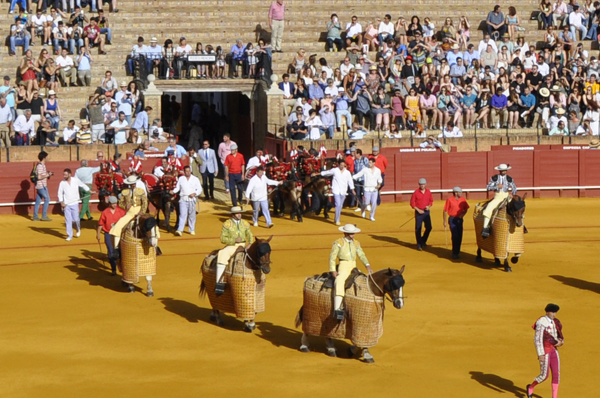Your Urban Explorers chose to fly into Madrid, take a cab to the main train station (there are two so you need to go to the right one if going on to the major cities), Estacion de Puerta de Atocha, (about 30 Euros). There are no trains or public transport from the airport to the train station. We bought a Spain Pass. It is good for a month for about $200 USD, which allowed us to visit any cities in Spain served by the single rail system during the next 30 days. We then asked for our seat assignments using those passes on the next train to Sevilla and were soon on our way.
Sevilla is about a two hour train ride south from Madrid. The station is very close to the old city center. The first thing you notice at this time of year (May) is the purple trees that are a dissonance to the eye. You expect green leaves and white flowers on the trees, but the purple reigns supreme in this city this time of year. Our cab ride in cost €10, but the return trip was €8 including tip. It may have been that the one way streets dictate a different path in than out. It is a warren of narrow streets, modern shops and a bull fight ring that appears to be the center of civic pride, based on the number of bull’s heads that are prominently displayed in the local pubs.
The Bull Fighting Ring is well kept, modern and easily accessible from any hotel in the old quarter of the city. On the day we were there, a Thursday, they had a full card and all the seats in the shade were taken. Our seats, under the portico and away from the ring, were €37 each. A few hearty souls opted to sit out in the sun, and one brave woman was in her full regalia of a flowing red and beige Castilian gown. Bull fighting is not for the squeamish.
Matadors, Torredores and Piccadores in Sevilla Bull Ring
We stayed at a very interesting hotel, Las Casas de la Juderia at Calle Santa Maria La Blanca 3, Sevilla 41004. This hotel has 178 traditional guestrooms featuring original and period furnishing, decorative art and Moorish leather craftsmanship. The hotel was a former residence for a Spanish duke. It comprises a labyrinth of Moorish-style houses and courtyards, interconnected by a grotto-style underground passage in the former Jewish quarter of the city, which is now the heart of the tourist area. The hotel is a short walk from the Catedral Giralda, built in the late 15th century, converted into an Islamist Mosque a short time afterwards during a period of occupation and back to a cathedral upon the vanquishment of the Moors. A tower was added in 1813 with 37 ramps leading to the top level. From this tower all Sevilla lays at your feet. One of the interesting games we played was counting the churches from that viewpoint, noting how close many were to each other.
Sevilla Cathedral
Sevilla was a one day stop for us on this particular trip. It is a pleasant city, but as described by one member of our group, a modern version of an old city. He noted that Toledo was more interesting than Sevilla because it was an old city that retained the uniqueness of that period in such a way that it was evident when we were there. Sevilla has evolved into a modern city within the strictures of that old format, making it much less interesting to someone trying to understand the history of this country and less interested in what it has become today.
Horse drawn carriages outside Sevilla Cathedral





No Comments